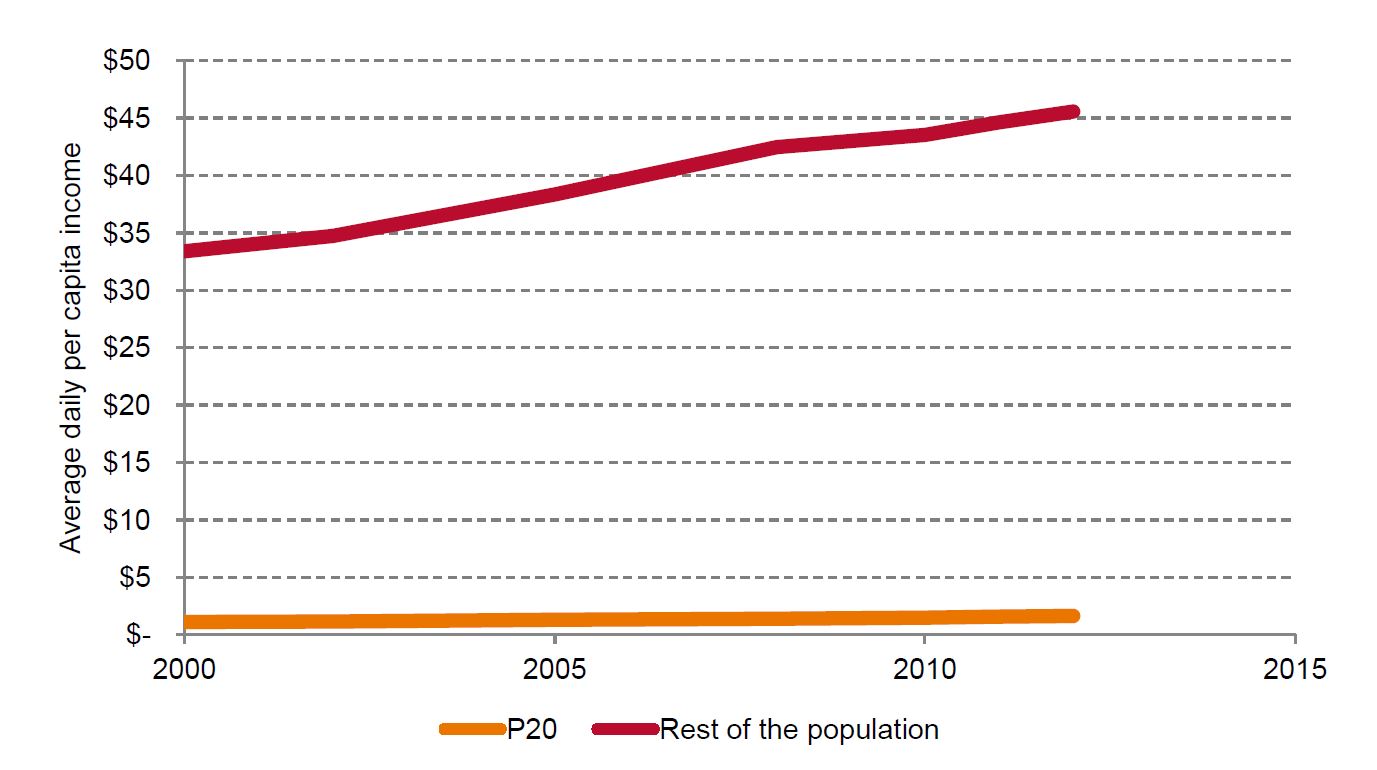Counting people to make people count
“Data are the lifeblood of decision-making and the raw material for accountability.”
— “A World that Counts”, November 2014
This article was originally published on the World Data Forum website
As we prepare for the United Nations World Data Forum in January, it will have been over three years since the UN Secretary-General’s High-Level Panel on the Post-2015 Development Agenda called for a “data revolution for sustainable development, with a new international initiative to improve the quality of statistics and information available to citizens”.
At Development Initiatives, where we have been promoting the value of data since 1993, it was music to our ears. The importance of data is now firmly grounded in the ambitions of the 2030 Agenda, and leaving no-one behind is at its heart. Crucially, these new goals and commitments require a different mindset and different tools to measure and monitor progress.
While existing statistics help us track national averages, they do not focus enough on who is included in progress and who is left behind. For data to be fit for purpose, we need to know exactly who the poorest people are and whether they are part of global progress. For this, global and local communities will need to harness the power of the data revolution and ensure that progress is monitored by accurately counting individual people everywhere.
Part of Development Initiatives’ efforts on this is our new P20 Initiative. The P20 Initiative will track progress based on key data for the poorest 20% of people globally, promoting the use of data disaggregated by income quintile, geography, gender, age and disability. In any country, if the status of this group fails to improve, then the success of the 2030 Agenda will be out of reach.
Our consultation paper, just launched, uses the best data available to establish who the people in the P20 are, where they live, and what we can say about their status as a group across three key bellwether indicators, namely: income, nutrition and civil registration. The question that underpins our work is: are the poorest 20% of people getting their share of global progress, or are they being left behind? We want to know if people in the P20 are better off, better nourished and being counted by their governments.
Why these bellwether indicators?
- Rising incomes give people choice and control over the goods and services they need – whether to invest in a home or a livelihood, in food, health, education or information.
- Better nutrition underpins health, as well as the ability to learn and earn.
- Civil registration means people count and have rights. We cannot begin to track if every individual has access to basic health, education or economic growth if we do not know they exist.
What do we know so far?
The gap between the poorest 20% of people and everyone else is getting bigger
Figure source: Development Initiatives based on PovcalNet
- Currently the P20 receive less than 1% of the world’s income. They will need to share in a greater proportion of global growth if they are not to be left behind.
- The P20 account for 44% of all under-5 cases of stunting.
- More than half of all unregistered births are in the P20.
- The P20 are spread across over 100 countries, although around three quarters live in just nine countries.
The data we already have goes some way to helping us build a profile of those who fall into this category. People in the P20 are more likely to be casual labourers than to have a secure job – and are more likely to work in hazardous environments and often on exploitative terms. They are more likely to be living in conflict-affected places, remote rural areas and urban slums. As families, they have very few assets, so an illness, the loss of work, a mudslide or a drought can push people and their loved ones into deeper poverty. The P20 are also likely to be held back by discrimination which reinforces disadvantage – this may be because of aspects of their identity such as gender, religion, caste, sexual orientation, disability, age or citizenship status.
This profile of the P20 is built on the best available data, but it is only a starting point. Progress on reducing poverty globally and inequalities across countries can only be measured with disaggregated data and by ensuring everyone is counted. At its most basic, data should be disaggregated by income quintile, geography, gender, age and disability (QGGAD). This requires going beyond the household level and counting each and every person.
The current data landscape does not provide sufficient data in all locations about people and the services they have access to. For example, poverty data relies on survey data but surveys often miss out key groups such as the homeless, refugees and other marginalised groups in society. We must invest in and improve civil registration and vital statistics, as well as ensure more censuses occur so that everyone is counted.
The urgency of making progress means that we should utilise the data that does exist despite its shortcomings. However, to achieve a radical poverty eradication agenda, we must also urgently invest in better, disaggregated data and statistics.
Related content
Priorities for the UK’s incoming Secretary of State Alok Sharma
As Alok Sharma takes office as Secretary of State, DI's Amy Dodd sets out key priorities for the UK and its global development agenda.
From review to delivery on the Global Goals – what should the immediate priorities be for the UK government?
On 26 June, the UK government published its Voluntary National Review measuring delivery against the Global Goals - but does it accurately capture progress?
Three priorities for the High-level Political Forum 2019
DI Director of Partnerships & Engagement Carolyn Culey sets out three key priorities for closing the gap between the poorest and the rest at HLPF 2019
